Don't have an account? Join for free
For advertising on
Interest to become a seller? Get info
Cart
Completions
SCSSV
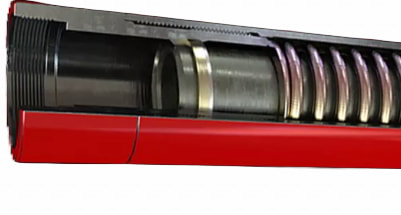
Storm Choke® H safety valves are ambient-type, wireline retrievable valves that are normally closed and precharged with a set dome pressure. When the well flowing pressure drops below the predetermined dome-pressure charge, as a result of a rupture in the flowline or surface equipment, the dome pressure and valve spring are designed to close the valve, shutting in the well. The H valve is used in wells producing large volumes of abrasive fluids. Its large bore is not restricted by a flow bean. The valve is designed to resist pressure surges. A metal-to-metal (MTM) ball and seat is used as the primary closure mechanism. The H valve is ideal for protecting wells with declining bottomhole pressure because this valve is tubing pressure sensitive instead of velocity sensitive. To reopen, the valve pressure must be fully equalized either by applying pressure in the tubing from the surface or by running a prong to allow equalization from below. The valve will reopen when the tubing pressure acting on the internal piston area overcomes the dome charge. Applications » Wells producing large volumes of abrasive fluids » Wells with declining bottomhole pressure » Wells with no provisions for surface-controlled valves Features » Large bore not restricted by a flow bean » MTM ball and seat » Designed to resist pressure surges *description excerpted from manufacturers catalogue. View Details

Storm Choke® H safety valves are ambient-type, wireline retrievable valves that are normally closed and precharged with a set dome pressure. When the well flowing pressure drops below the predetermined dome-pressure charge, as a result of a rupture in the flowline or surface equipment, the dome pressure and valve spring are designed to close the valve, shutting in the well. The H valve is used in wells producing large volumes of abrasive fluids. Its large bore is not restricted by a flow bean. The valve is designed to resist pressure surges. A metal-to-metal (MTM) ball and seat is used as the primary closure mechanism. The H valve is ideal for protecting wells with declining bottomhole pressure because this valve is tubing pressure sensitive instead of velocity sensitive. To reopen, the valve pressure must be fully equalized either by applying pressure in the tubing from the surface or by running a prong to allow equalization from below. The valve will reopen when the tubing pressure acting on the internal piston area overcomes the dome charge. Applications » Wells producing large volumes of abrasive fluids » Wells with declining bottomhole pressure » Wells with no provisions for surface-controlled valves Features » Large bore not restricted by a flow bean » MTM ball and seat » Designed to resist pressure surges *description excerpted from manufacturers catalogue. View Details

Storm Choke® H safety valves are ambient-type, wireline retrievable valves that are normally closed and precharged with a set dome pressure. When the well flowing pressure drops below the predetermined dome-pressure charge, as a result of a rupture in the flowline or surface equipment, the dome pressure and valve spring are designed to close the valve, shutting in the well. The H valve is used in wells producing large volumes of abrasive fluids. Its large bore is not restricted by a flow bean. The valve is designed to resist pressure surges. A metal-to-metal (MTM) ball and seat is used as the primary closure mechanism. The H valve is ideal for protecting wells with declining bottomhole pressure because this valve is tubing pressure sensitive instead of velocity sensitive. To reopen, the valve pressure must be fully equalized either by applying pressure in the tubing from the surface or by running a prong to allow equalization from below. The valve will reopen when the tubing pressure acting on the internal piston area overcomes the dome charge. Applications » Wells producing large volumes of abrasive fluids » Wells with declining bottomhole pressure » Wells with no provisions for surface-controlled valves Features » Large bore not restricted by a flow bean » MTM ball and seat » Designed to resist pressure surges *description excerpted from manufacturers catalogue. View Details

Storm Choke® H safety valves are ambient-type, wireline retrievable valves that are normally closed and precharged with a set dome pressure. When the well flowing pressure drops below the predetermined dome-pressure charge, as a result of a rupture in the flowline or surface equipment, the dome pressure and valve spring are designed to close the valve, shutting in the well. The H valve is used in wells producing large volumes of abrasive fluids. Its large bore is not restricted by a flow bean. The valve is designed to resist pressure surges. A metal-to-metal (MTM) ball and seat is used as the primary closure mechanism. The H valve is ideal for protecting wells with declining bottomhole pressure because this valve is tubing pressure sensitive instead of velocity sensitive. To reopen, the valve pressure must be fully equalized either by applying pressure in the tubing from the surface or by running a prong to allow equalization from below. The valve will reopen when the tubing pressure acting on the internal piston area overcomes the dome charge. Applications » Wells producing large volumes of abrasive fluids » Wells with declining bottomhole pressure » Wells with no provisions for surface-controlled valves Features » Large bore not restricted by a flow bean » MTM ball and seat » Designed to resist pressure surges *description excerpted from manufacturers catalogue. View Details
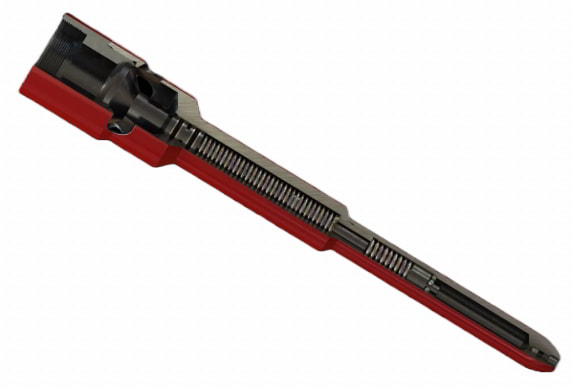
Storm Choke® K safety valves are ambient-type, wireline retrievable valves with the largest flow area of all direct controlled safety valves on the market. They are ideally suited for high-volume, low-pressure wells. These valves are normally closed and pre-charged with a set dome pressure. When the well flowing pressure drops below the predetermined dome-pressure charge because of a rupture in flowline or surface equipment, the dome pressure and main valve spring close the valve, shutting in the well below the earth’s surface. This valve contains a detent mechanism to provide a positive snap-action closure at the predetermined disaster rate of the valve. Its bore is not restricted by a flow bean. The valve is designed to resist pressure surges. A metal-to-metal poppet valve and seat comprise the valve’s primary closure mechanism. The K valve is ideal for protecting wells with declining bottomhole pressure. This valve closes in situations where a pressure decline would not activate a valve with a flow bean. To reopen the valve, the operator must fully equalize pressure either by applying pressure in the tubing from the surface or by an equalizing prong. The valve will reopen when the tubing pressure acting on the internal piston area overcomes the dome charge. Applications » Wells with declining bottomhole pressure » High-volume, low-pressure wells » Wells with no provisions for surface-controlled valves Features » Poppet closure » Large ports with capacity for high-volume wells » Designed to resist pressure surges *description excerpted from manufacturers catalogue. View Details
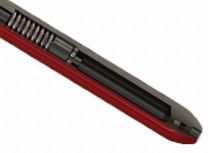
Storm Choke® K safety valves are ambient-type, wireline retrievable valves with the largest flow area of all direct controlled safety valves on the market. They are ideally suited for high-volume, low-pressure wells. These valves are normally closed and pre-charged with a set dome pressure. When the well flowing pressure drops below the predetermined dome-pressure charge because of a rupture in flowline or surface equipment, the dome pressure and main valve spring close the valve, shutting in the well below the earth’s surface. This valve contains a detent mechanism to provide a positive snap-action closure at the predetermined disaster rate of the valve. Its bore is not restricted by a flow bean. The valve is designed to resist pressure surges. A metal-to-metal poppet valve and seat comprise the valve’s primary closure mechanism. The K valve is ideal for protecting wells with declining bottomhole pressure. This valve closes in situations where a pressure decline would not activate a valve with a flow bean. To reopen the valve, the operator must fully equalize pressure either by applying pressure in the tubing from the surface or by an equalizing prong. The valve will reopen when the tubing pressure acting on the internal piston area overcomes the dome charge. Applications » Wells with declining bottomhole pressure » High-volume, low-pressure wells » Wells with no provisions for surface-controlled valves Features » Poppet closure » Large ports with capacity for high-volume wells » Designed to resist pressure surges *description excerpted from manufacturers catalogue. View Details
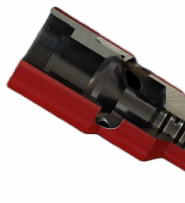
Storm Choke® K safety valves are ambient-type, wireline retrievable valves with the largest flow area of all direct controlled safety valves on the market. They are ideally suited for high-volume, low-pressure wells. These valves are normally closed and pre-charged with a set dome pressure. When the well flowing pressure drops below the predetermined dome-pressure charge because of a rupture in flowline or surface equipment, the dome pressure and main valve spring close the valve, shutting in the well below the earth’s surface. This valve contains a detent mechanism to provide a positive snap-action closure at the predetermined disaster rate of the valve. Its bore is not restricted by a flow bean. The valve is designed to resist pressure surges. A metal-to-metal poppet valve and seat comprise the valve’s primary closure mechanism. The K valve is ideal for protecting wells with declining bottomhole pressure. This valve closes in situations where a pressure decline would not activate a valve with a flow bean. To reopen the valve, the operator must fully equalize pressure either by applying pressure in the tubing from the surface or by an equalizing prong. The valve will reopen when the tubing pressure acting on the internal piston area overcomes the dome charge. Applications » Wells with declining bottomhole pressure » High-volume, low-pressure wells » Wells with no provisions for surface-controlled valves Features » Poppet closure » Large ports with capacity for high-volume wells » Designed to resist pressure surges *description excerpted from manufacturers catalogue. View Details
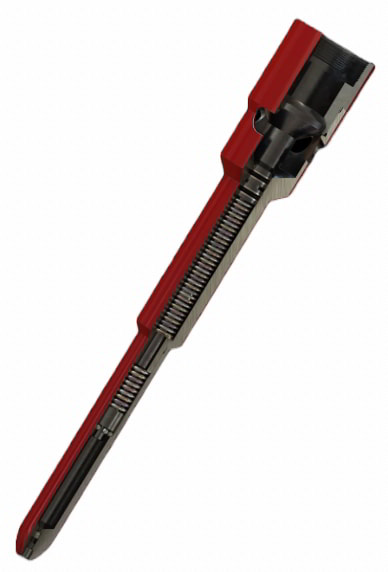
Storm Choke® K safety valves are ambient-type, wireline retrievable valves with the largest flow area of all direct controlled safety valves on the market. They are ideally suited for high-volume, low-pressure wells. These valves are normally closed and pre-charged with a set dome pressure. When the well flowing pressure drops below the predetermined dome-pressure charge because of a rupture in flowline or surface equipment, the dome pressure and main valve spring close the valve, shutting in the well below the earth’s surface. This valve contains a detent mechanism to provide a positive snap-action closure at the predetermined disaster rate of the valve. Its bore is not restricted by a flow bean. The valve is designed to resist pressure surges. A metal-to-metal poppet valve and seat comprise the valve’s primary closure mechanism. The K valve is ideal for protecting wells with declining bottomhole pressure. This valve closes in situations where a pressure decline would not activate a valve with a flow bean. To reopen the valve, the operator must fully equalize pressure either by applying pressure in the tubing from the surface or by an equalizing prong. The valve will reopen when the tubing pressure acting on the internal piston area overcomes the dome charge. Applications » Wells with declining bottomhole pressure » High-volume, low-pressure wells » Wells with no provisions for surface-controlled valves Features » Poppet closure » Large ports with capacity for high-volume wells » Designed to resist pressure surges *description excerpted from manufacturers catalogue. View Details
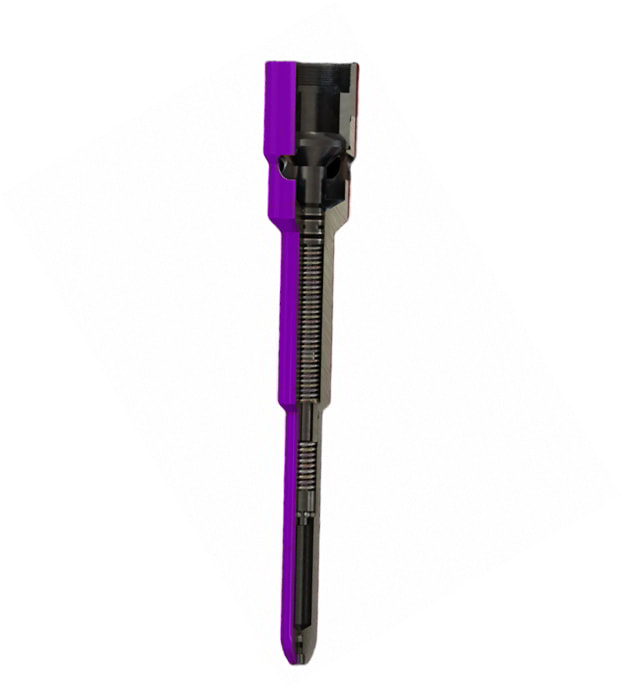
Storm Choke® K safety valves are ambient-type, wireline retrievable valves with the largest flow area of all direct controlled safety valves on the market. They are ideally suited for high-volume, low-pressure wells. These valves are normally closed and pre-charged with a set dome pressure. When the well flowing pressure drops below the predetermined dome-pressure charge because of a rupture in flowline or surface equipment, the dome pressure and main valve spring close the valve, shutting in the well below the earth’s surface. This valve contains a detent mechanism to provide a positive snap-action closure at the predetermined disaster rate of the valve. Its bore is not restricted by a flow bean. The valve is designed to resist pressure surges. A metal-to-metal poppet valve and seat comprise the valve’s primary closure mechanism. The K valve is ideal for protecting wells with declining bottomhole pressure. This valve closes in situations where a pressure decline would not activate a valve with a flow bean. To reopen the valve, the operator must fully equalize pressure either by applying pressure in the tubing from the surface or by an equalizing prong. The valve will reopen when the tubing pressure acting on the internal piston area overcomes the dome charge. Applications » Wells with declining bottomhole pressure » High-volume, low-pressure wells » Wells with no provisions for surface-controlled valves Features » Poppet closure » Large ports with capacity for high-volume wells » Designed to resist pressure surges *description excerpted from manufacturers catalogue. View Details
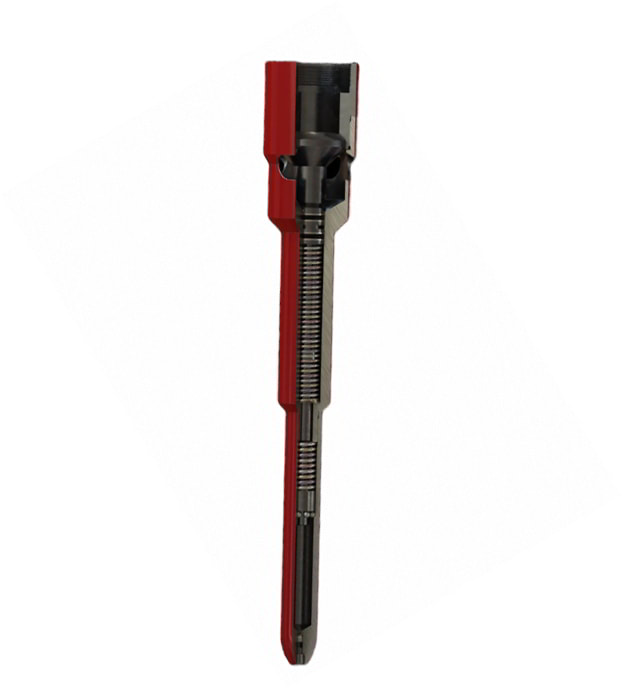
Storm Choke® K safety valves are ambient-type, wireline retrievable valves with the largest flow area of all direct controlled safety valves on the market. They are ideally suited for high-volume, low-pressure wells. These valves are normally closed and pre-charged with a set dome pressure. When the well flowing pressure drops below the predetermined dome-pressure charge because of a rupture in flowline or surface equipment, the dome pressure and main valve spring close the valve, shutting in the well below the earth’s surface. This valve contains a detent mechanism to provide a positive snap-action closure at the predetermined disaster rate of the valve. Its bore is not restricted by a flow bean. The valve is designed to resist pressure surges. A metal-to-metal poppet valve and seat comprise the valve’s primary closure mechanism. The K valve is ideal for protecting wells with declining bottomhole pressure. This valve closes in situations where a pressure decline would not activate a valve with a flow bean. To reopen the valve, the operator must fully equalize pressure either by applying pressure in the tubing from the surface or by an equalizing prong. The valve will reopen when the tubing pressure acting on the internal piston area overcomes the dome charge. Applications » Wells with declining bottomhole pressure » High-volume, low-pressure wells » Wells with no provisions for surface-controlled valves Features » Poppet closure » Large ports with capacity for high-volume wells » Designed to resist pressure surges *description excerpted from manufacturers catalogue. View Details
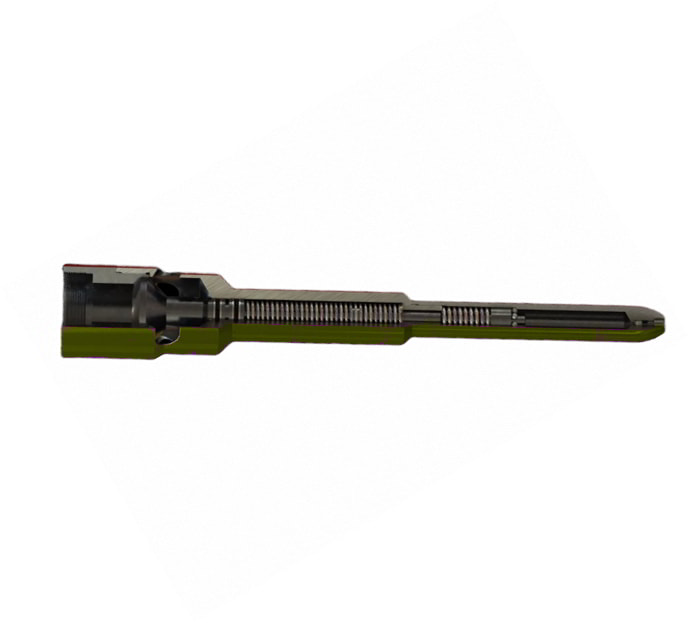
Storm Choke® K safety valves are ambient-type, wireline retrievable valves with the largest flow area of all direct controlled safety valves on the market. They are ideally suited for high-volume, low-pressure wells. These valves are normally closed and pre-charged with a set dome pressure. When the well flowing pressure drops below the predetermined dome-pressure charge because of a rupture in flowline or surface equipment, the dome pressure and main valve spring close the valve, shutting in the well below the earth’s surface. This valve contains a detent mechanism to provide a positive snap-action closure at the predetermined disaster rate of the valve. Its bore is not restricted by a flow bean. The valve is designed to resist pressure surges. A metal-to-metal poppet valve and seat comprise the valve’s primary closure mechanism. The K valve is ideal for protecting wells with declining bottomhole pressure. This valve closes in situations where a pressure decline would not activate a valve with a flow bean. To reopen the valve, the operator must fully equalize pressure either by applying pressure in the tubing from the surface or by an equalizing prong. The valve will reopen when the tubing pressure acting on the internal piston area overcomes the dome charge. Applications » Wells with declining bottomhole pressure » High-volume, low-pressure wells » Wells with no provisions for surface-controlled valves Features » Poppet closure » Large ports with capacity for high-volume wells » Designed to resist pressure surges *description excerpted from manufacturers catalogue. View Details
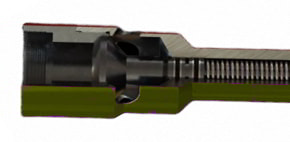
Storm Choke® K safety valves are ambient-type, wireline retrievable valves with the largest flow area of all direct controlled safety valves on the market. They are ideally suited for high-volume, low-pressure wells. These valves are normally closed and pre-charged with a set dome pressure. When the well flowing pressure drops below the predetermined dome-pressure charge because of a rupture in flowline or surface equipment, the dome pressure and main valve spring close the valve, shutting in the well below the earth’s surface. This valve contains a detent mechanism to provide a positive snap-action closure at the predetermined disaster rate of the valve. Its bore is not restricted by a flow bean. The valve is designed to resist pressure surges. A metal-to-metal poppet valve and seat comprise the valve’s primary closure mechanism. The K valve is ideal for protecting wells with declining bottomhole pressure. This valve closes in situations where a pressure decline would not activate a valve with a flow bean. To reopen the valve, the operator must fully equalize pressure either by applying pressure in the tubing from the surface or by an equalizing prong. The valve will reopen when the tubing pressure acting on the internal piston area overcomes the dome charge. Applications » Wells with declining bottomhole pressure » High-volume, low-pressure wells » Wells with no provisions for surface-controlled valves Features » Poppet closure » Large ports with capacity for high-volume wells » Designed to resist pressure surges *description excerpted from manufacturers catalogue. View Details
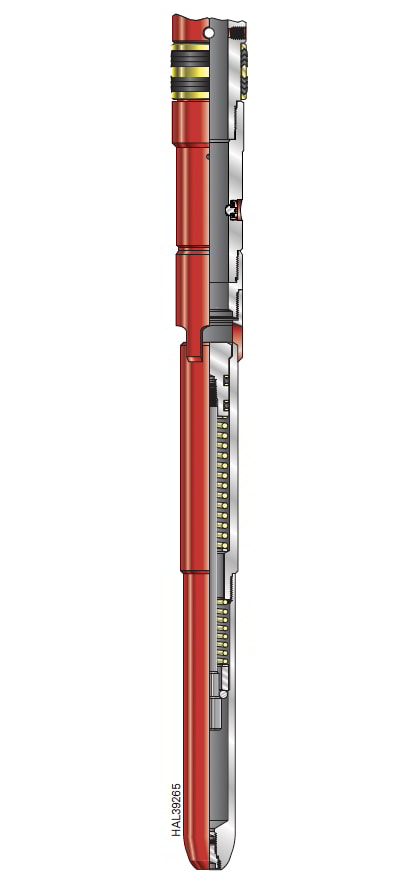
Storm Choke® K safety valves are ambient-type, wireline retrievable valves with the largest flow area of all direct controlled safety valves on the market. They are ideally suited for high-volume, low-pressure wells. These valves are normally closed and pre-charged with a set dome pressure. When the well flowing pressure drops below the predetermined dome-pressure charge because of a rupture in flowline or surface equipment, the dome pressure and main valve spring close the valve, shutting in the well below the earth’s surface. This valve contains a detent mechanism to provide a positive snap-action closure at the predetermined disaster rate of the valve. Its bore is not restricted by a flow bean. The valve is designed to resist pressure surges. A metal-to-metal poppet valve and seat comprise the valve’s primary closure mechanism. The K valve is ideal for protecting wells with declining bottomhole pressure. This valve closes in situations where a pressure decline would not activate a valve with a flow bean. To reopen the valve, the operator must fully equalize pressure either by applying pressure in the tubing from the surface or by an equalizing prong. The valve will reopen when the tubing pressure acting on the internal piston area overcomes the dome charge. Applications » Wells with declining bottomhole pressure » High-volume, low-pressure wells » Wells with no provisions for surface-controlled valves Features » Poppet closure » Large ports with capacity for high-volume wells » Designed to resist pressure surges *description excerpted from manufacturers catalogue. View Details
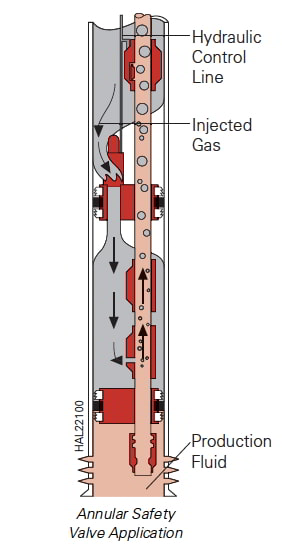
An annular vent sleeve valve communicates between the casing annulus and producing formation. The valve is a hydraulically operated sliding sleeve device like a surface controlled subsurface safety valve with a hydraulic piston and a power spring to maintain the valve in a normally closed position. The valve is used with a bull plug on top or as an annular safety valve by providing annular bypass while control pressure is applied. With an electrical feedthrough device, this valve functions through a single packer mandrel as an electric power cable passage and annular bypass. On a dual hydraulic packer, the valve operates by a common hydraulic control line that sets the packer and operates the tubing-retrievable safety valve. Hydraulic pressure from the control line shifts the valve open to create a flow path across the packer in the annulus. Spring force closes the valve upon loss of control-line pressure to the piston. If the valve becomes inoperable or closed, an emergency shear feature allows fluid to be pumped into the producing formation from the annulus. Applications » Gas lift and electric submersible pump situations Features » Accurate fluid level shot during pumping because of large ported area through the vent sleeve » Maximum gas vent flow area allows increased gas flow rates and lower circulating pressures » Valve will shut off flow from either direction — production or injection *description excerpted from manufacturers catalogue. View Details
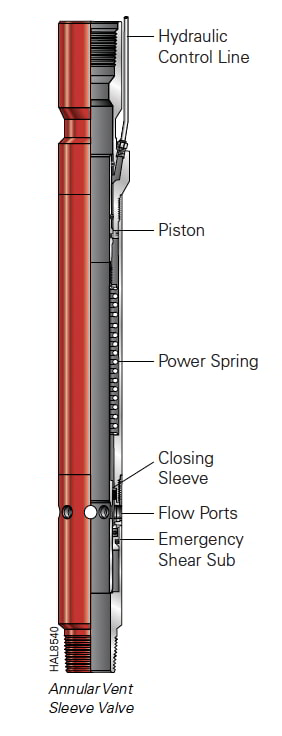
An annular vent sleeve valve communicates between the casing annulus and producing formation. The valve is a hydraulically operated sliding sleeve device like a surface controlled subsurface safety valve with a hydraulic piston and a power spring to maintain the valve in a normally closed position. The valve is used with a bull plug on top or as an annular safety valve by providing annular bypass while control pressure is applied. With an electrical feedthrough device, this valve functions through a single packer mandrel as an electric power cable passage and annular bypass. On a dual hydraulic packer, the valve operates by a common hydraulic control line that sets the packer and operates the tubing-retrievable safety valve. Hydraulic pressure from the control line shifts the valve open to create a flow path across the packer in the annulus. Spring force closes the valve upon loss of control-line pressure to the piston. If the valve becomes inoperable or closed, an emergency shear feature allows fluid to be pumped into the producing formation from the annulus. Applications » Gas lift and electric submersible pump situations Features » Accurate fluid level shot during pumping because of large ported area through the vent sleeve » Maximum gas vent flow area allows increased gas flow rates and lower circulating pressures » Valve will shut off flow from either direction — production or injection *description excerpted from manufacturers catalogue. View Details
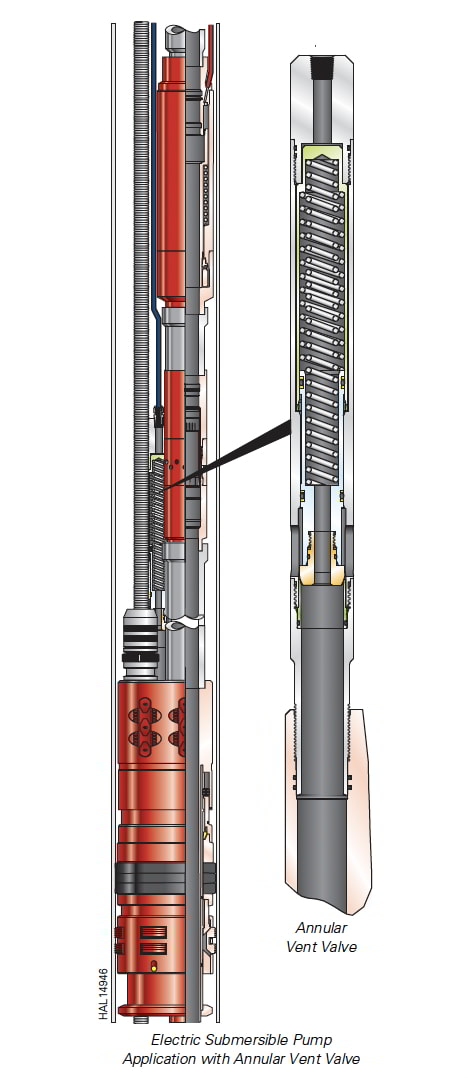
An annular vent sleeve valve communicates between the casing annulus and producing formation. The valve is a hydraulically operated sliding sleeve device like a surface controlled subsurface safety valve with a hydraulic piston and a power spring to maintain the valve in a normally closed position. The valve is used with a bull plug on top or as an annular safety valve by providing annular bypass while control pressure is applied. With an electrical feedthrough device, this valve functions through a single packer mandrel as an electric power cable passage and annular bypass. On a dual hydraulic packer, the valve operates by a common hydraulic control line that sets the packer and operates the tubing-retrievable safety valve. Hydraulic pressure from the control line shifts the valve open to create a flow path across the packer in the annulus. Spring force closes the valve upon loss of control-line pressure to the piston. If the valve becomes inoperable or closed, an emergency shear feature allows fluid to be pumped into the producing formation from the annulus. Applications » Gas lift and electric submersible pump situations Features » Accurate fluid level shot during pumping because of large ported area through the vent sleeve » Maximum gas vent flow area allows increased gas flow rates and lower circulating pressures » Valve will shut off flow from either direction — production or injection *description excerpted from manufacturers catalogue. View Details
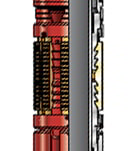
The AV annulus safety valve is a fully retrievable high performance annulus safety system packer with integral annulus safety valve. The system provides annular bypass through a hydraulically operated poppet valve. The AV system is run in a single trip in conjunction with a setting sub that can be shifted for hydraulic tubing-set or can be alternatively control-line set from surface. Applications The AV system is used for controlling annulus fluids in gas lift applications, monitoring of annulus pressures in critical situations, and in one- or two-trip annulus safety system completions. The completion can be run to depth and set with the surface tubing hanger flanged up. It can also be used in completions in which spacing out against a subsurface tubing hanger is required (i.e., no elastomeric expansion joint necessary). The tailpipe can be left in either tension or compression. The system can be used where high tensile loads and pressure differentials exist with the completion anchored in unsupported or poor condition casing. Features » Interlock system prevents preset » Tubing test facility while running » Hydraulically set in one trip on tubing with no mandrel movement » Annulus-mounted release mechanism » Internal/external components rotationally locked together » Element anti-extrusion system » One-trip system allows multiple control-line bypass » Premium thread connections — no elastomeric seals tubing to annulus » Primary release method is applied tubing pressure using dedicated punch release tool on slickline » Secondary release method available with simple tubing cut *information collected from manufacturer literature View Details
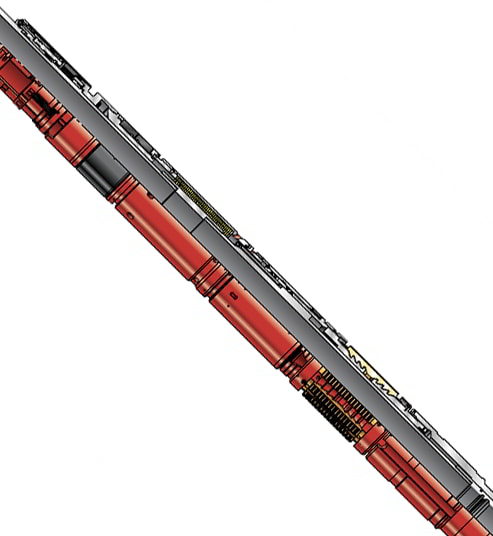
The AV annulus safety valve is a fully retrievable high performance annulus safety system packer with integral annulus safety valve. The system provides annular bypass through a hydraulically operated poppet valve. The AV system is run in a single trip in conjunction with a setting sub that can be shifted for hydraulic tubing-set or can be alternatively control-line set from surface. Applications The AV system is used for controlling annulus fluids in gas lift applications, monitoring of annulus pressures in critical situations, and in one- or two-trip annulus safety system completions. The completion can be run to depth and set with the surface tubing hanger flanged up. It can also be used in completions in which spacing out against a subsurface tubing hanger is required (i.e., no elastomeric expansion joint necessary). The tailpipe can be left in either tension or compression. The system can be used where high tensile loads and pressure differentials exist with the completion anchored in unsupported or poor condition casing. Features » Interlock system prevents preset » Tubing test facility while running » Hydraulically set in one trip on tubing with no mandrel movement » Annulus-mounted release mechanism » Internal/external components rotationally locked together » Element anti-extrusion system » One-trip system allows multiple control-line bypass » Premium thread connections — no elastomeric seals tubing to annulus » Primary release method is applied tubing pressure using dedicated punch release tool on slickline » Secondary release method available with simple tubing cut *information collected from manufacturer literature View Details
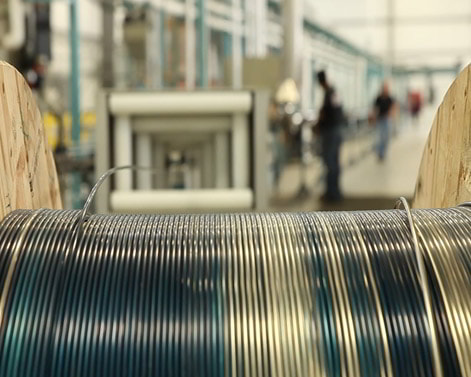
Control lines are assembled on reels filled with fluid and pressure tested. Reel spools are designed so pressure can be applied at any time during running to check control-line integrity. Hydraulic control lines are made from two different manufacturing processes that conform to ASTM specifications: (1) seamless and (2) welded and sunk. Seamless Tubing is fabricated from a solid rod. The process involves forcing a mandrel or punch through the solid rod to form a tube. The continuous lengths available from this process are limited. Welded and Sunk Tubing is fabricated from flat stock. The process involves rolling the stock into a cylinder and welding the seam. Once in tube form, it is drawn through a die to achieve the proper OD. This process is considerably less costly than the seamless method and yields lines available in continuous lengths with no butt-welded connections. Optional single and dual lines with protective encapsulation are available. The encapsulated material is suitable for use in most annular fluids. Encapsulation protects lines from damage during installation and simplifies the running process. The dual-encapsulated line can be used with “balanced” SCSSVs or injection wells where multiple lines are required. As an option, a protective cable between two control lines is available. Single-encapsulated lines have no cable; however, a protective cable on either side of the control line can be ordered. Installation Control lines are attached to subsurface controls with appropriate tube fitting and pressure tested before running into the wellbore. Line spools are hung in the derrick, and control line is paid out as tubing is run. Applications » For SCSSVs Features » Different lengths of control line in continuous coil » Stainless and alloy 825 materials offered » Control lines offered in various encapsulated options » All control lines conform to ASTM specifications » Lines available in other sizes on request *information sourced from manufacturer View Details
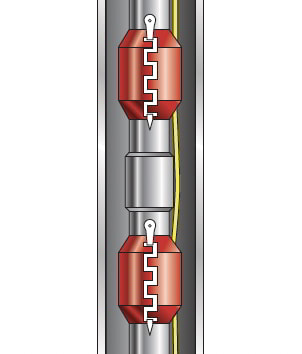
The manufacturer offers two types of control-line protectors — both designed to provide maximum control-line protection. The first type of protector is a unique design that combines a steel outer shell and a resilient inner liner. The second type is all metal, which provides fullover-the-coupling protection for virtually any size electrical submersible pump cable, bare tube, or encapsulated bundle configuration. The all-metal protector is also available for mid-joint applications. A variety of channels that can accommodate a combination of bare control lines and/or dual encapsulated control line is offered for each of the protectors. Both types of protectors use a tapered pin lock to provide maximum gripping force. The tapered pin lock can be installed by hand and driven to the locked position by a pneumatic hammer or a manual hammer tool. *information sourced from manufacturer View Details
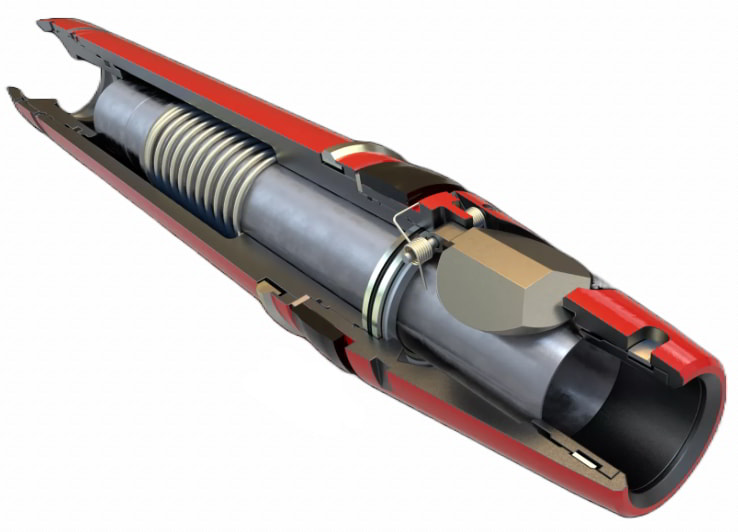
MC (flapper-type) injection valves are used in injection wells to automatically shut-in the tubing string when injection stops or flow reverses. MC injection valves are spring-loaded, wireline-retrievable valves with large bores. The MC injection valves also feature sealing areas that are out of the direct flow path. These valves are designed to be held open by injection pressure for fluid passage. If injection flow becomes static or reverses for any reason, the spring and/or reverse flow causes the valves to close. These valves are designed to remain closed until pressure differential across the valves is equalized and injection is resumed. Applications » Injection wells Features » MC valves have sealing areas that are out of the direct flow path *information sourced from manufacturer View Details
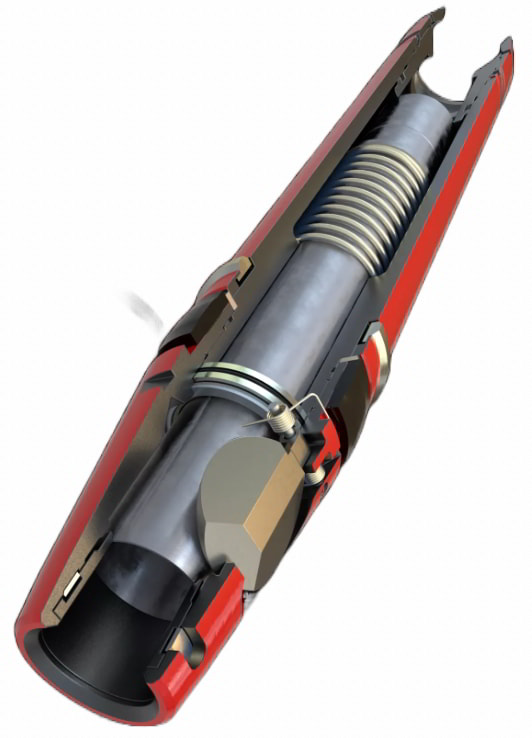
MC (flapper-type) injection valves are used in injection wells to automatically shut-in the tubing string when injection stops or flow reverses. MC injection valves are spring-loaded, wireline-retrievable valves with large bores. The MC injection valves also feature sealing areas that are out of the direct flow path. These valves are designed to be held open by injection pressure for fluid passage. If injection flow becomes static or reverses for any reason, the spring and/or reverse flow causes the valves to close. These valves are designed to remain closed until pressure differential across the valves is equalized and injection is resumed. Applications » Injection wells Features » MC valves have sealing areas that are out of the direct flow path *information sourced from manufacturer View Details
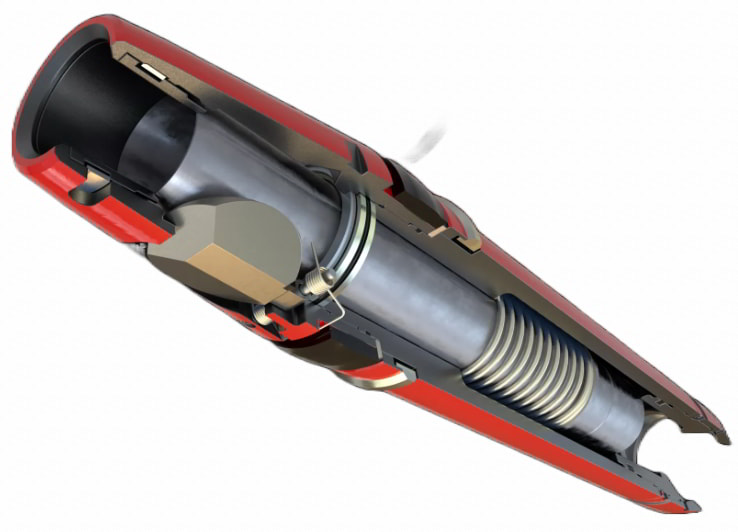
MC (flapper-type) injection valves are used in injection wells to automatically shut-in the tubing string when injection stops or flow reverses. MC injection valves are spring-loaded, wireline-retrievable valves with large bores. The MC injection valves also feature sealing areas that are out of the direct flow path. These valves are designed to be held open by injection pressure for fluid passage. If injection flow becomes static or reverses for any reason, the spring and/or reverse flow causes the valves to close. These valves are designed to remain closed until pressure differential across the valves is equalized and injection is resumed. Applications » Injection wells Features » MC valves have sealing areas that are out of the direct flow path *information sourced from manufacturer View Details
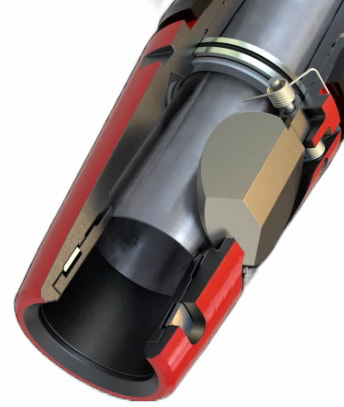
MC (flapper-type) injection valves are used in injection wells to automatically shut-in the tubing string when injection stops or flow reverses. MC injection valves are spring-loaded, wireline-retrievable valves with large bores. The MC injection valves also feature sealing areas that are out of the direct flow path. These valves are designed to be held open by injection pressure for fluid passage. If injection flow becomes static or reverses for any reason, the spring and/or reverse flow causes the valves to close. These valves are designed to remain closed until pressure differential across the valves is equalized and injection is resumed. Applications » Injection wells Features » MC valves have sealing areas that are out of the direct flow path *information sourced from manufacturer View Details
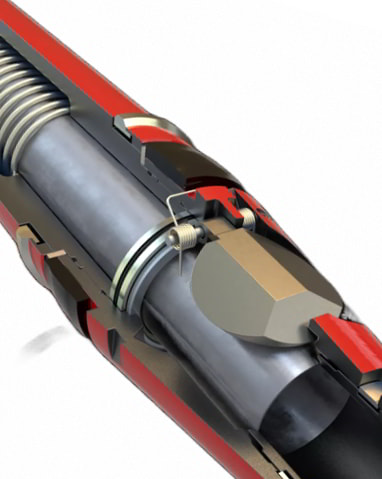
MC (flapper-type) injection valves are used in injection wells to automatically shut-in the tubing string when injection stops or flow reverses. MC injection valves are spring-loaded, wireline-retrievable valves with large bores. The MC injection valves also feature sealing areas that are out of the direct flow path. These valves are designed to be held open by injection pressure for fluid passage. If injection flow becomes static or reverses for any reason, the spring and/or reverse flow causes the valves to close. These valves are designed to remain closed until pressure differential across the valves is equalized and injection is resumed. Applications » Injection wells Features » MC valves have sealing areas that are out of the direct flow path *information sourced from manufacturer View Details
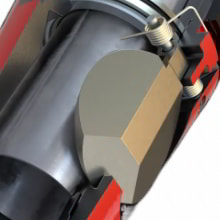
MC (flapper-type) injection valves are used in injection wells to automatically shut-in the tubing string when injection stops or flow reverses. MC injection valves are spring-loaded, wireline-retrievable valves with large bores. The MC injection valves also feature sealing areas that are out of the direct flow path. These valves are designed to be held open by injection pressure for fluid passage. If injection flow becomes static or reverses for any reason, the spring and/or reverse flow causes the valves to close. These valves are designed to remain closed until pressure differential across the valves is equalized and injection is resumed. Applications » Injection wells Features » MC valves have sealing areas that are out of the direct flow path *information sourced from manufacturer View Details
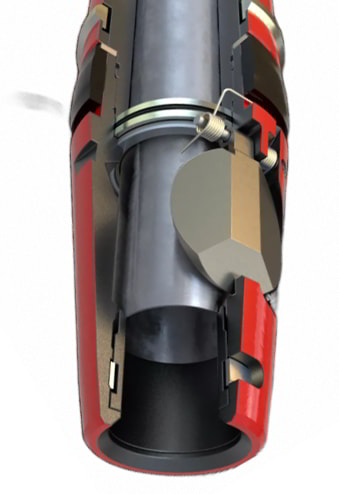
MC (flapper-type) injection valves are used in injection wells to automatically shut-in the tubing string when injection stops or flow reverses. MC injection valves are spring-loaded, wireline-retrievable valves with large bores. The MC injection valves also feature sealing areas that are out of the direct flow path. These valves are designed to be held open by injection pressure for fluid passage. If injection flow becomes static or reverses for any reason, the spring and/or reverse flow causes the valves to close. These valves are designed to remain closed until pressure differential across the valves is equalized and injection is resumed. Applications » Injection wells Features » MC valves have sealing areas that are out of the direct flow path *information sourced from manufacturer View Details
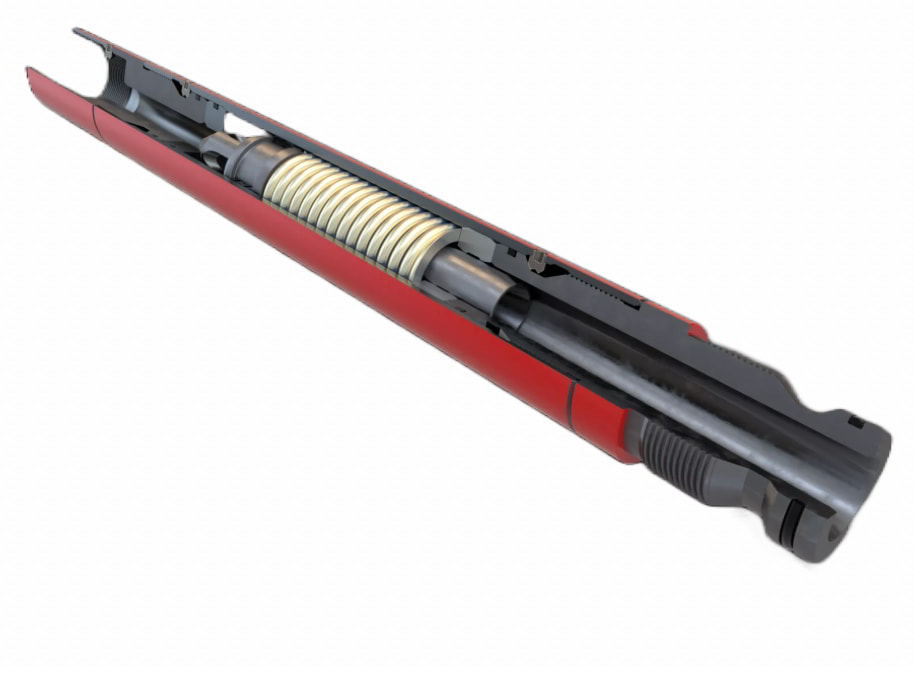
The WI retrievable injection valve is a high-performance, high-flow rate injection valve. High throughput is achieved by a unique valve configuration that minimizes turbulent and potentially erosive flow. Operation is not dependent on a specific flow rate, pressure, or setting depth, thus negating the need for adjustment over time. The valve incorporates a metal-to-metal valve and seat energized by the combination of an integral spring and well pressure acting from below. The WI injection valve can be deployed on a wireline lock or through-tubing pack-off device, providing flexibility not available with alternative injection valve systems. As a result of the simple design with fewer parts, redress and repair costs are considerably lower than those for other injection valve systems. Applications The WI injection valve is primarily used in water injection applications as an alternative to conventional tubing or wireline-set safety valves. The valve is also commonly used as a retrofit solution in water injectors in which a tubing to annulus leak has occurred. The valve can be deployed below the leak point to eliminate uncontrolled annulus pressure increases when the injection stops. Features » Compatible with all known lock systems » Dedicated designs to suit Halliburton EB0 intervention packers » Enhanced internal flow profile » Simple design and construction » Flow-loop testing performed to establish pressure drop versus pump rate *information referenced from supplier catalog. View Details
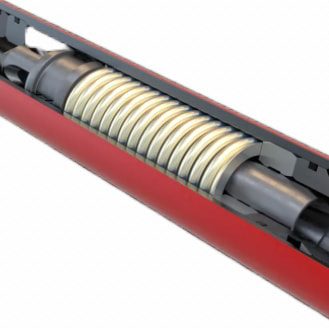
The WI retrievable injection valve is a high-performance, high-flow rate injection valve. High throughput is achieved by a unique valve configuration that minimizes turbulent and potentially erosive flow. Operation is not dependent on a specific flow rate, pressure, or setting depth, thus negating the need for adjustment over time. The valve incorporates a metal-to-metal valve and seat energized by the combination of an integral spring and well pressure acting from below. The WI injection valve can be deployed on a wireline lock or through-tubing pack-off device, providing flexibility not available with alternative injection valve systems. As a result of the simple design with fewer parts, redress and repair costs are considerably lower than those for other injection valve systems. Applications The WI injection valve is primarily used in water injection applications as an alternative to conventional tubing or wireline-set safety valves. The valve is also commonly used as a retrofit solution in water injectors in which a tubing to annulus leak has occurred. The valve can be deployed below the leak point to eliminate uncontrolled annulus pressure increases when the injection stops. Features » Compatible with all known lock systems » Dedicated designs to suit Halliburton EB0 intervention packers » Enhanced internal flow profile » Simple design and construction » Flow-loop testing performed to establish pressure drop versus pump rate *information referenced from supplier catalog. View Details
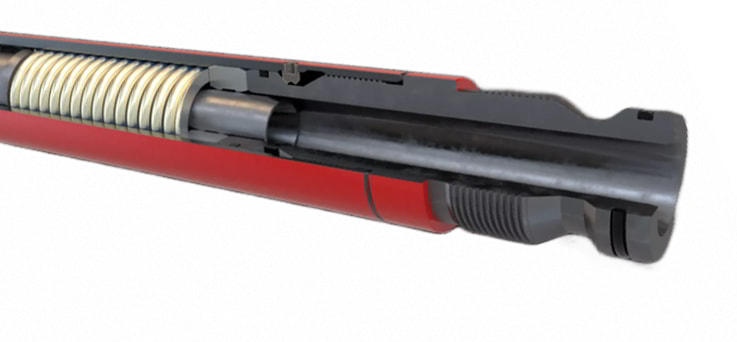
The WI retrievable injection valve is a high-performance, high-flow rate injection valve. High throughput is achieved by a unique valve configuration that minimizes turbulent and potentially erosive flow. Operation is not dependent on a specific flow rate, pressure, or setting depth, thus negating the need for adjustment over time. The valve incorporates a metal-to-metal valve and seat energized by the combination of an integral spring and well pressure acting from below. The WI injection valve can be deployed on a wireline lock or through-tubing pack-off device, providing flexibility not available with alternative injection valve systems. As a result of the simple design with fewer parts, redress and repair costs are considerably lower than those for other injection valve systems. Applications The WI injection valve is primarily used in water injection applications as an alternative to conventional tubing or wireline-set safety valves. The valve is also commonly used as a retrofit solution in water injectors in which a tubing to annulus leak has occurred. The valve can be deployed below the leak point to eliminate uncontrolled annulus pressure increases when the injection stops. Features » Compatible with all known lock systems » Dedicated designs to suit Halliburton EB0 intervention packers » Enhanced internal flow profile » Simple design and construction » Flow-loop testing performed to establish pressure drop versus pump rate *information referenced from supplier catalog. View Details
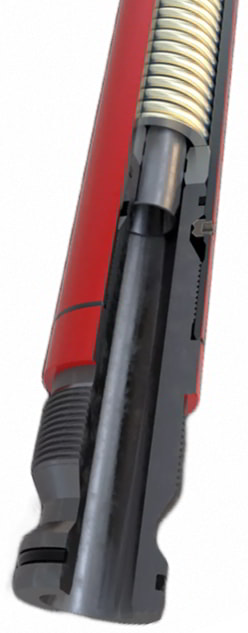
The WI retrievable injection valve is a high-performance, high-flow rate injection valve. High throughput is achieved by a unique valve configuration that minimizes turbulent and potentially erosive flow. Operation is not dependent on a specific flow rate, pressure, or setting depth, thus negating the need for adjustment over time. The valve incorporates a metal-to-metal valve and seat energized by the combination of an integral spring and well pressure acting from below. The WI injection valve can be deployed on a wireline lock or through-tubing pack-off device, providing flexibility not available with alternative injection valve systems. As a result of the simple design with fewer parts, redress and repair costs are considerably lower than those for other injection valve systems. Applications The WI injection valve is primarily used in water injection applications as an alternative to conventional tubing or wireline-set safety valves. The valve is also commonly used as a retrofit solution in water injectors in which a tubing to annulus leak has occurred. The valve can be deployed below the leak point to eliminate uncontrolled annulus pressure increases when the injection stops. Features » Compatible with all known lock systems » Dedicated designs to suit Halliburton EB0 intervention packers » Enhanced internal flow profile » Simple design and construction » Flow-loop testing performed to establish pressure drop versus pump rate *information referenced from supplier catalog. View Details
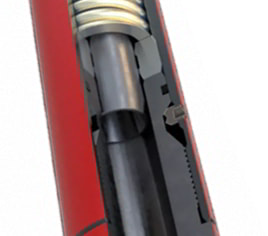
The WI retrievable injection valve is a high-performance, high-flow rate injection valve. High throughput is achieved by a unique valve configuration that minimizes turbulent and potentially erosive flow. Operation is not dependent on a specific flow rate, pressure, or setting depth, thus negating the need for adjustment over time. The valve incorporates a metal-to-metal valve and seat energized by the combination of an integral spring and well pressure acting from below. The WI injection valve can be deployed on a wireline lock or through-tubing pack-off device, providing flexibility not available with alternative injection valve systems. As a result of the simple design with fewer parts, redress and repair costs are considerably lower than those for other injection valve systems. Applications The WI injection valve is primarily used in water injection applications as an alternative to conventional tubing or wireline-set safety valves. The valve is also commonly used as a retrofit solution in water injectors in which a tubing to annulus leak has occurred. The valve can be deployed below the leak point to eliminate uncontrolled annulus pressure increases when the injection stops. Features » Compatible with all known lock systems » Dedicated designs to suit Halliburton EB0 intervention packers » Enhanced internal flow profile » Simple design and construction » Flow-loop testing performed to establish pressure drop versus pump rate *information referenced from supplier catalog. View Details
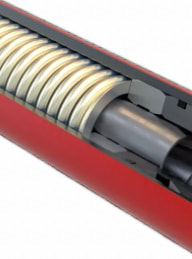
The WI retrievable injection valve is a high-performance, high-flow rate injection valve. High throughput is achieved by a unique valve configuration that minimizes turbulent and potentially erosive flow. Operation is not dependent on a specific flow rate, pressure, or setting depth, thus negating the need for adjustment over time. The valve incorporates a metal-to-metal valve and seat energized by the combination of an integral spring and well pressure acting from below. The WI injection valve can be deployed on a wireline lock or through-tubing pack-off device, providing flexibility not available with alternative injection valve systems. As a result of the simple design with fewer parts, redress and repair costs are considerably lower than those for other injection valve systems. Applications The WI injection valve is primarily used in water injection applications as an alternative to conventional tubing or wireline-set safety valves. The valve is also commonly used as a retrofit solution in water injectors in which a tubing to annulus leak has occurred. The valve can be deployed below the leak point to eliminate uncontrolled annulus pressure increases when the injection stops. Features » Compatible with all known lock systems » Dedicated designs to suit Halliburton EB0 intervention packers » Enhanced internal flow profile » Simple design and construction » Flow-loop testing performed to establish pressure drop versus pump rate *information referenced from supplier catalog. View Details
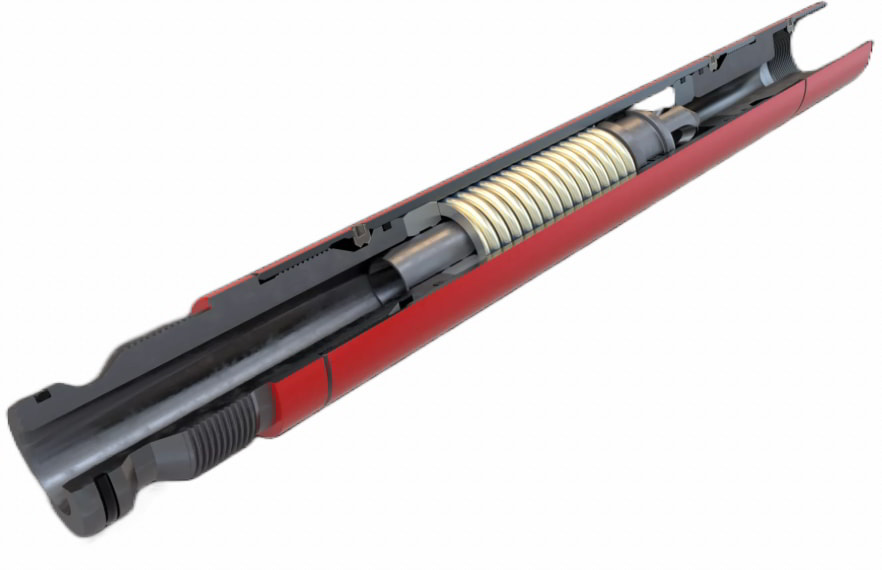
The WI retrievable injection valve is a high-performance, high-flow rate injection valve. High throughput is achieved by a unique valve configuration that minimizes turbulent and potentially erosive flow. Operation is not dependent on a specific flow rate, pressure, or setting depth, thus negating the need for adjustment over time. The valve incorporates a metal-to-metal valve and seat energized by the combination of an integral spring and well pressure acting from below. The WI injection valve can be deployed on a wireline lock or through-tubing pack-off device, providing flexibility not available with alternative injection valve systems. As a result of the simple design with fewer parts, redress and repair costs are considerably lower than those for other injection valve systems. Applications The WI injection valve is primarily used in water injection applications as an alternative to conventional tubing or wireline-set safety valves. The valve is also commonly used as a retrofit solution in water injectors in which a tubing to annulus leak has occurred. The valve can be deployed below the leak point to eliminate uncontrolled annulus pressure increases when the injection stops. Features » Compatible with all known lock systems » Dedicated designs to suit Halliburton EB0 intervention packers » Enhanced internal flow profile » Simple design and construction » Flow-loop testing performed to establish pressure drop versus pump rate *information referenced from supplier catalog. View Details
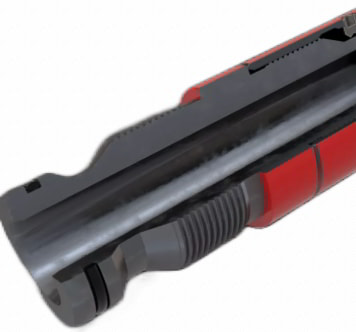
The WI retrievable injection valve is a high-performance, high-flow rate injection valve. High throughput is achieved by a unique valve configuration that minimizes turbulent and potentially erosive flow. Operation is not dependent on a specific flow rate, pressure, or setting depth, thus negating the need for adjustment over time. The valve incorporates a metal-to-metal valve and seat energized by the combination of an integral spring and well pressure acting from below. The WI injection valve can be deployed on a wireline lock or through-tubing pack-off device, providing flexibility not available with alternative injection valve systems. As a result of the simple design with fewer parts, redress and repair costs are considerably lower than those for other injection valve systems. Applications The WI injection valve is primarily used in water injection applications as an alternative to conventional tubing or wireline-set safety valves. The valve is also commonly used as a retrofit solution in water injectors in which a tubing to annulus leak has occurred. The valve can be deployed below the leak point to eliminate uncontrolled annulus pressure increases when the injection stops. Features » Compatible with all known lock systems » Dedicated designs to suit Halliburton EB0 intervention packers » Enhanced internal flow profile » Simple design and construction » Flow-loop testing performed to establish pressure drop versus pump rate *information referenced from supplier catalog. View Details
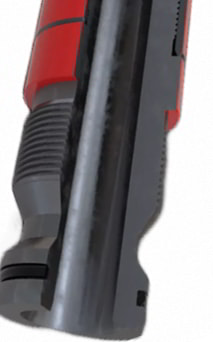
The WI retrievable injection valve is a high-performance, high-flow rate injection valve. High throughput is achieved by a unique valve configuration that minimizes turbulent and potentially erosive flow. Operation is not dependent on a specific flow rate, pressure, or setting depth, thus negating the need for adjustment over time. The valve incorporates a metal-to-metal valve and seat energized by the combination of an integral spring and well pressure acting from below. The WI injection valve can be deployed on a wireline lock or through-tubing pack-off device, providing flexibility not available with alternative injection valve systems. As a result of the simple design with fewer parts, redress and repair costs are considerably lower than those for other injection valve systems. Applications The WI injection valve is primarily used in water injection applications as an alternative to conventional tubing or wireline-set safety valves. The valve is also commonly used as a retrofit solution in water injectors in which a tubing to annulus leak has occurred. The valve can be deployed below the leak point to eliminate uncontrolled annulus pressure increases when the injection stops. Features » Compatible with all known lock systems » Dedicated designs to suit Halliburton EB0 intervention packers » Enhanced internal flow profile » Simple design and construction » Flow-loop testing performed to establish pressure drop versus pump rate *information referenced from supplier catalog. View Details
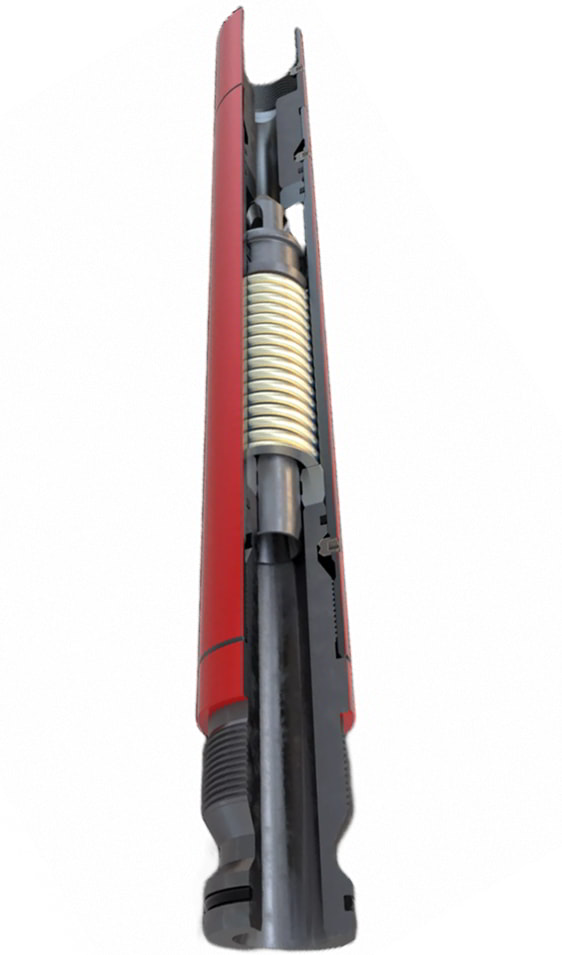
The WI retrievable injection valve is a high-performance, high-flow rate injection valve. High throughput is achieved by a unique valve configuration that minimizes turbulent and potentially erosive flow. Operation is not dependent on a specific flow rate, pressure, or setting depth, thus negating the need for adjustment over time. The valve incorporates a metal-to-metal valve and seat energized by the combination of an integral spring and well pressure acting from below. The WI injection valve can be deployed on a wireline lock or through-tubing pack-off device, providing flexibility not available with alternative injection valve systems. As a result of the simple design with fewer parts, redress and repair costs are considerably lower than those for other injection valve systems. Applications The WI injection valve is primarily used in water injection applications as an alternative to conventional tubing or wireline-set safety valves. The valve is also commonly used as a retrofit solution in water injectors in which a tubing to annulus leak has occurred. The valve can be deployed below the leak point to eliminate uncontrolled annulus pressure increases when the injection stops. Features » Compatible with all known lock systems » Dedicated designs to suit Halliburton EB0 intervention packers » Enhanced internal flow profile » Simple design and construction » Flow-loop testing performed to establish pressure drop versus pump rate *information referenced from supplier catalog. View Details
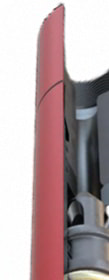
The WI retrievable injection valve is a high-performance, high-flow rate injection valve. High throughput is achieved by a unique valve configuration that minimizes turbulent and potentially erosive flow. Operation is not dependent on a specific flow rate, pressure, or setting depth, thus negating the need for adjustment over time. The valve incorporates a metal-to-metal valve and seat energized by the combination of an integral spring and well pressure acting from below. The WI injection valve can be deployed on a wireline lock or through-tubing pack-off device, providing flexibility not available with alternative injection valve systems. As a result of the simple design with fewer parts, redress and repair costs are considerably lower than those for other injection valve systems. Applications The WI injection valve is primarily used in water injection applications as an alternative to conventional tubing or wireline-set safety valves. The valve is also commonly used as a retrofit solution in water injectors in which a tubing to annulus leak has occurred. The valve can be deployed below the leak point to eliminate uncontrolled annulus pressure increases when the injection stops. Features » Compatible with all known lock systems » Dedicated designs to suit Halliburton EB0 intervention packers » Enhanced internal flow profile » Simple design and construction » Flow-loop testing performed to establish pressure drop versus pump rate *information referenced from supplier catalog. View Details
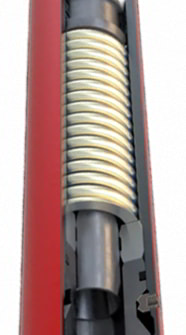
The WI retrievable injection valve is a high-performance, high-flow rate injection valve. High throughput is achieved by a unique valve configuration that minimizes turbulent and potentially erosive flow. Operation is not dependent on a specific flow rate, pressure, or setting depth, thus negating the need for adjustment over time. The valve incorporates a metal-to-metal valve and seat energized by the combination of an integral spring and well pressure acting from below. The WI injection valve can be deployed on a wireline lock or through-tubing pack-off device, providing flexibility not available with alternative injection valve systems. As a result of the simple design with fewer parts, redress and repair costs are considerably lower than those for other injection valve systems. Applications The WI injection valve is primarily used in water injection applications as an alternative to conventional tubing or wireline-set safety valves. The valve is also commonly used as a retrofit solution in water injectors in which a tubing to annulus leak has occurred. The valve can be deployed below the leak point to eliminate uncontrolled annulus pressure increases when the injection stops. Features » Compatible with all known lock systems » Dedicated designs to suit Halliburton EB0 intervention packers » Enhanced internal flow profile » Simple design and construction » Flow-loop testing performed to establish pressure drop versus pump rate *information referenced from supplier catalog. View Details
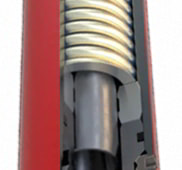
The WI retrievable injection valve is a high-performance, high-flow rate injection valve. High throughput is achieved by a unique valve configuration that minimizes turbulent and potentially erosive flow. Operation is not dependent on a specific flow rate, pressure, or setting depth, thus negating the need for adjustment over time. The valve incorporates a metal-to-metal valve and seat energized by the combination of an integral spring and well pressure acting from below. The WI injection valve can be deployed on a wireline lock or through-tubing pack-off device, providing flexibility not available with alternative injection valve systems. As a result of the simple design with fewer parts, redress and repair costs are considerably lower than those for other injection valve systems. Applications The WI injection valve is primarily used in water injection applications as an alternative to conventional tubing or wireline-set safety valves. The valve is also commonly used as a retrofit solution in water injectors in which a tubing to annulus leak has occurred. The valve can be deployed below the leak point to eliminate uncontrolled annulus pressure increases when the injection stops. Features » Compatible with all known lock systems » Dedicated designs to suit Halliburton EB0 intervention packers » Enhanced internal flow profile » Simple design and construction » Flow-loop testing performed to establish pressure drop versus pump rate *information referenced from supplier catalog. View Details
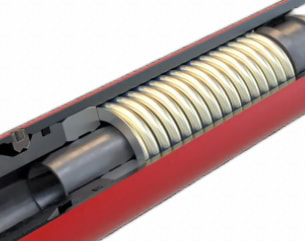
The WI retrievable injection valve is a high-performance, high-flow rate injection valve. High throughput is achieved by a unique valve configuration that minimizes turbulent and potentially erosive flow. Operation is not dependent on a specific flow rate, pressure, or setting depth, thus negating the need for adjustment over time. The valve incorporates a metal-to-metal valve and seat energized by the combination of an integral spring and well pressure acting from below. The WI injection valve can be deployed on a wireline lock or through-tubing pack-off device, providing flexibility not available with alternative injection valve systems. As a result of the simple design with fewer parts, redress and repair costs are considerably lower than those for other injection valve systems. Applications The WI injection valve is primarily used in water injection applications as an alternative to conventional tubing or wireline-set safety valves. The valve is also commonly used as a retrofit solution in water injectors in which a tubing to annulus leak has occurred. The valve can be deployed below the leak point to eliminate uncontrolled annulus pressure increases when the injection stops. Features » Compatible with all known lock systems » Dedicated designs to suit Halliburton EB0 intervention packers » Enhanced internal flow profile » Simple design and construction » Flow-loop testing performed to establish pressure drop versus pump rate *information referenced from supplier catalog. View Details
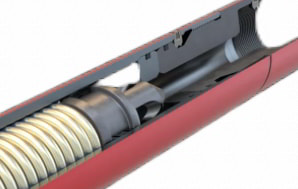
The WI retrievable injection valve is a high-performance, high-flow rate injection valve. High throughput is achieved by a unique valve configuration that minimizes turbulent and potentially erosive flow. Operation is not dependent on a specific flow rate, pressure, or setting depth, thus negating the need for adjustment over time. The valve incorporates a metal-to-metal valve and seat energized by the combination of an integral spring and well pressure acting from below. The WI injection valve can be deployed on a wireline lock or through-tubing pack-off device, providing flexibility not available with alternative injection valve systems. As a result of the simple design with fewer parts, redress and repair costs are considerably lower than those for other injection valve systems. Applications The WI injection valve is primarily used in water injection applications as an alternative to conventional tubing or wireline-set safety valves. The valve is also commonly used as a retrofit solution in water injectors in which a tubing to annulus leak has occurred. The valve can be deployed below the leak point to eliminate uncontrolled annulus pressure increases when the injection stops. Features » Compatible with all known lock systems » Dedicated designs to suit Halliburton EB0 intervention packers » Enhanced internal flow profile » Simple design and construction » Flow-loop testing performed to establish pressure drop versus pump rate *information referenced from supplier catalog. View Details
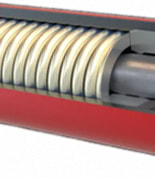
The WI retrievable injection valve is a high-performance, high-flow rate injection valve. High throughput is achieved by a unique valve configuration that minimizes turbulent and potentially erosive flow. Operation is not dependent on a specific flow rate, pressure, or setting depth, thus negating the need for adjustment over time. The valve incorporates a metal-to-metal valve and seat energized by the combination of an integral spring and well pressure acting from below. The WI injection valve can be deployed on a wireline lock or through-tubing pack-off device, providing flexibility not available with alternative injection valve systems. As a result of the simple design with fewer parts, redress and repair costs are considerably lower than those for other injection valve systems. Applications The WI injection valve is primarily used in water injection applications as an alternative to conventional tubing or wireline-set safety valves. The valve is also commonly used as a retrofit solution in water injectors in which a tubing to annulus leak has occurred. The valve can be deployed below the leak point to eliminate uncontrolled annulus pressure increases when the injection stops. Features » Compatible with all known lock systems » Dedicated designs to suit Halliburton EB0 intervention packers » Enhanced internal flow profile » Simple design and construction » Flow-loop testing performed to establish pressure drop versus pump rate *information referenced from supplier catalog. View Details
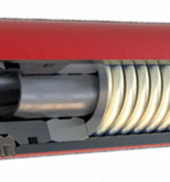
The WI retrievable injection valve is a high-performance, high-flow rate injection valve. High throughput is achieved by a unique valve configuration that minimizes turbulent and potentially erosive flow. Operation is not dependent on a specific flow rate, pressure, or setting depth, thus negating the need for adjustment over time. The valve incorporates a metal-to-metal valve and seat energized by the combination of an integral spring and well pressure acting from below. The WI injection valve can be deployed on a wireline lock or through-tubing pack-off device, providing flexibility not available with alternative injection valve systems. As a result of the simple design with fewer parts, redress and repair costs are considerably lower than those for other injection valve systems. Applications The WI injection valve is primarily used in water injection applications as an alternative to conventional tubing or wireline-set safety valves. The valve is also commonly used as a retrofit solution in water injectors in which a tubing to annulus leak has occurred. The valve can be deployed below the leak point to eliminate uncontrolled annulus pressure increases when the injection stops. Features » Compatible with all known lock systems » Dedicated designs to suit Halliburton EB0 intervention packers » Enhanced internal flow profile » Simple design and construction » Flow-loop testing performed to establish pressure drop versus pump rate *information referenced from supplier catalog. View Details
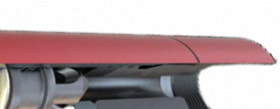
The WI retrievable injection valve is a high-performance, high-flow rate injection valve. High throughput is achieved by a unique valve configuration that minimizes turbulent and potentially erosive flow. Operation is not dependent on a specific flow rate, pressure, or setting depth, thus negating the need for adjustment over time. The valve incorporates a metal-to-metal valve and seat energized by the combination of an integral spring and well pressure acting from below. The WI injection valve can be deployed on a wireline lock or through-tubing pack-off device, providing flexibility not available with alternative injection valve systems. As a result of the simple design with fewer parts, redress and repair costs are considerably lower than those for other injection valve systems. Applications The WI injection valve is primarily used in water injection applications as an alternative to conventional tubing or wireline-set safety valves. The valve is also commonly used as a retrofit solution in water injectors in which a tubing to annulus leak has occurred. The valve can be deployed below the leak point to eliminate uncontrolled annulus pressure increases when the injection stops. Features » Compatible with all known lock systems » Dedicated designs to suit Halliburton EB0 intervention packers » Enhanced internal flow profile » Simple design and construction » Flow-loop testing performed to establish pressure drop versus pump rate *information referenced from supplier catalog. View Details
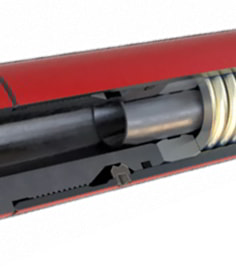
The WI retrievable injection valve is a high-performance, high-flow rate injection valve. High throughput is achieved by a unique valve configuration that minimizes turbulent and potentially erosive flow. Operation is not dependent on a specific flow rate, pressure, or setting depth, thus negating the need for adjustment over time. The valve incorporates a metal-to-metal valve and seat energized by the combination of an integral spring and well pressure acting from below. The WI injection valve can be deployed on a wireline lock or through-tubing pack-off device, providing flexibility not available with alternative injection valve systems. As a result of the simple design with fewer parts, redress and repair costs are considerably lower than those for other injection valve systems. Applications The WI injection valve is primarily used in water injection applications as an alternative to conventional tubing or wireline-set safety valves. The valve is also commonly used as a retrofit solution in water injectors in which a tubing to annulus leak has occurred. The valve can be deployed below the leak point to eliminate uncontrolled annulus pressure increases when the injection stops. Features » Compatible with all known lock systems » Dedicated designs to suit Halliburton EB0 intervention packers » Enhanced internal flow profile » Simple design and construction » Flow-loop testing performed to establish pressure drop versus pump rate *information referenced from supplier catalog. View Details
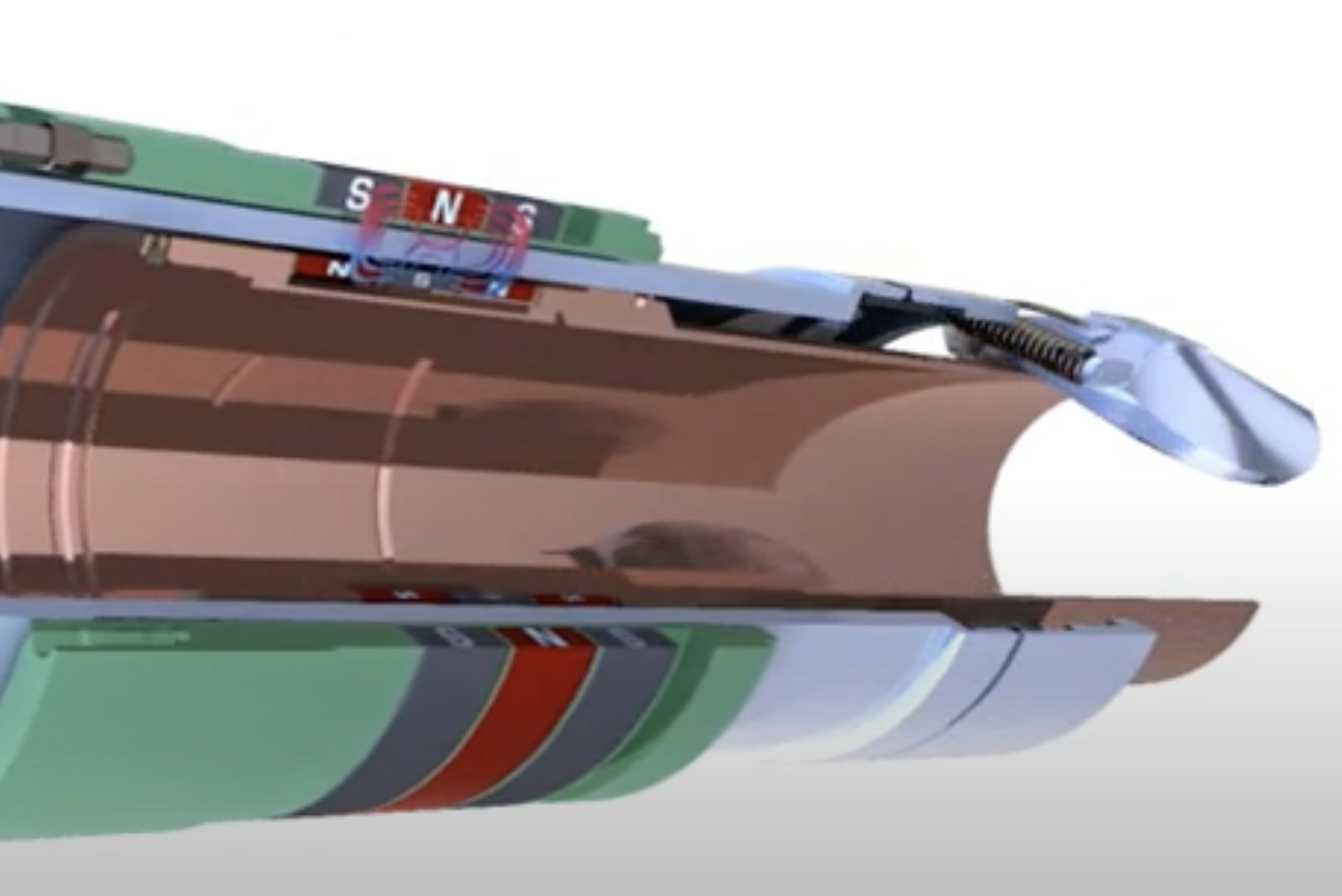
The DepthStar® tubing-retrievable safety valve (TRSV) is a revolutionary concept in the realm of surface controlled subsurface safety valves. Unlike other TRSVs, the DepthStar valve functions completely independent of well pressure; therefore, it is able to operate at consistently low hydraulic pressures, making it an ideal solution for deepwater completions. Previously, solutions to wellbore isolation of the piston required additional seals and/or gas-charged chambers where their reliability is heavily dependent on elastomeric seals and the permanent, long-term containment of a dome charge. The DepthStar valve, through the use of a revolutionary magnetic coupler, allows for positioning the hydraulic actuator completely out of the tubing wellbore. By repositioning the hydraulic actuator outside the tubing wellbore, the DepthStar valve becomes the world’s first 100% metal-to-metal (MTM) safety valve that contains no moving seals within the tubing wellbore. This reduction in seals combined with an intrinsically simple design makes the DepthStar TRSV inherently reliable. The DepthStar TRSV operates with a low operating pressure, making it an ideal solution for deep-set applications. Features » No moving seals exposed to the tubing wellbore » 100% MTM sealing within the tubing wellbore » Less than 5,000-psi maximum valve opening capability regardless of setting depth or pressure » Minimized number of body connections » Proven MTM, non-elastomer hydraulic actuator » Isolated flow tube *information referenced from supplier catalog. View Details
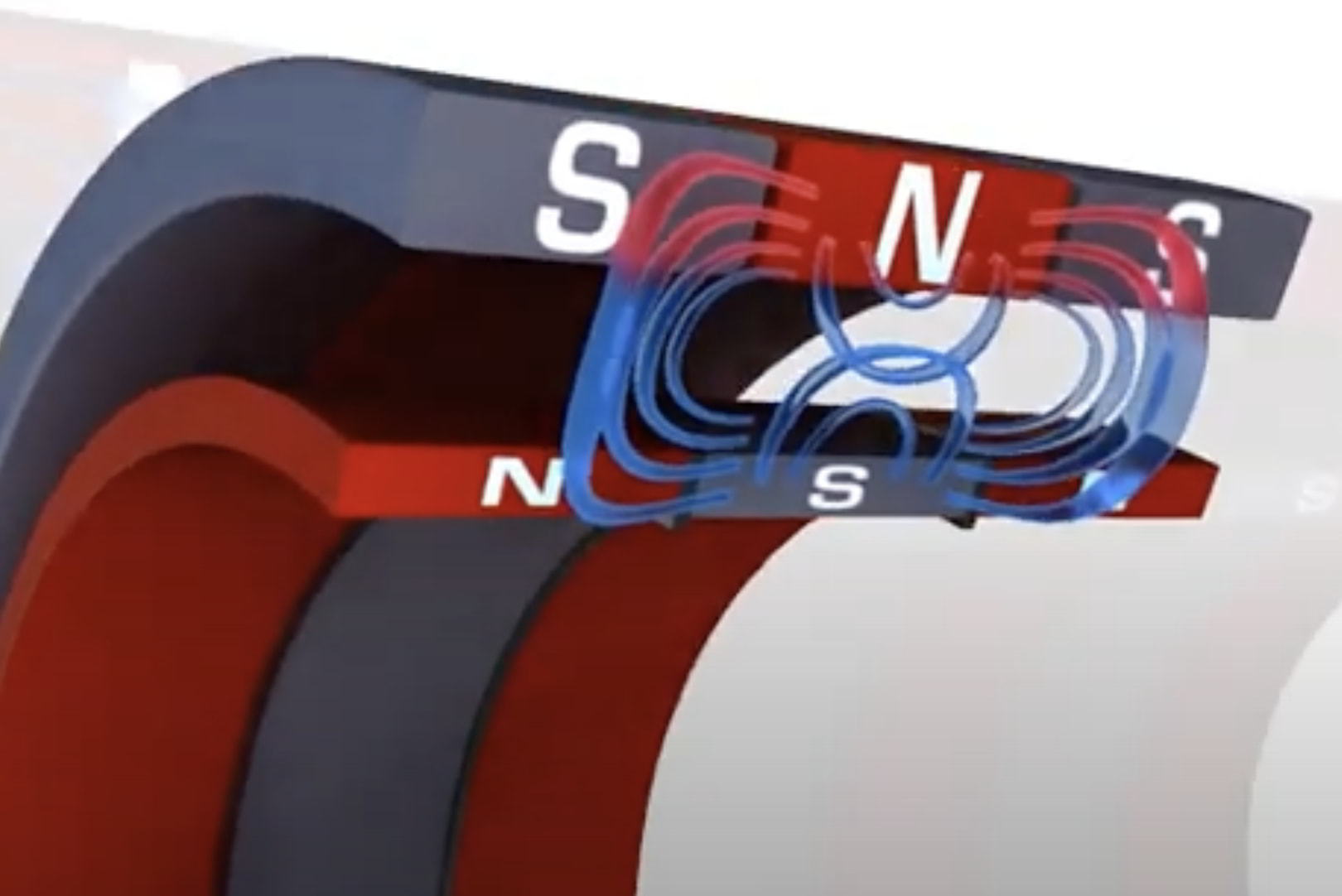
Unlike other TRSVs, the DepthStar valve functions completely independent of well pressure; therefore, it is able to operate at consistently low hydraulic pressures, making it an ideal solution for deepwater completions. The DepthStar® tubing-retrievable safety valve (TRSV) is a revolutionary concept in the realm of surface controlled subsurface safety valves. Previously, solutions to wellbore isolation of the piston required additional seals and/or gas-charged chambers where their reliability is heavily dependent on elastomeric seals and the permanent, long-term containment of a dome charge. The DepthStar valve, through the use of a revolutionary magnetic coupler, allows for positioning the hydraulic actuator completely out of the tubing wellbore. By repositioning the hydraulic actuator outside the tubing wellbore, the DepthStar valve becomes the world’s first 100% metal-to-metal (MTM) safety valve that contains no moving seals within the tubing wellbore. This reduction in seals combined with an intrinsically simple design makes the DepthStar TRSV inherently reliable. The DepthStar TRSV operates with a low operating pressure, making it an ideal solution for deep-set applications. Features » No moving seals exposed to the tubing wellbore » 100% MTM sealing within the tubing wellbore » Less than 5,000-psi maximum valve opening capability regardless of setting depth or pressure » Minimized number of body connections » Proven MTM, non-elastomer hydraulic actuator » Isolated flow tube *information referenced from supplier catalog. View Details
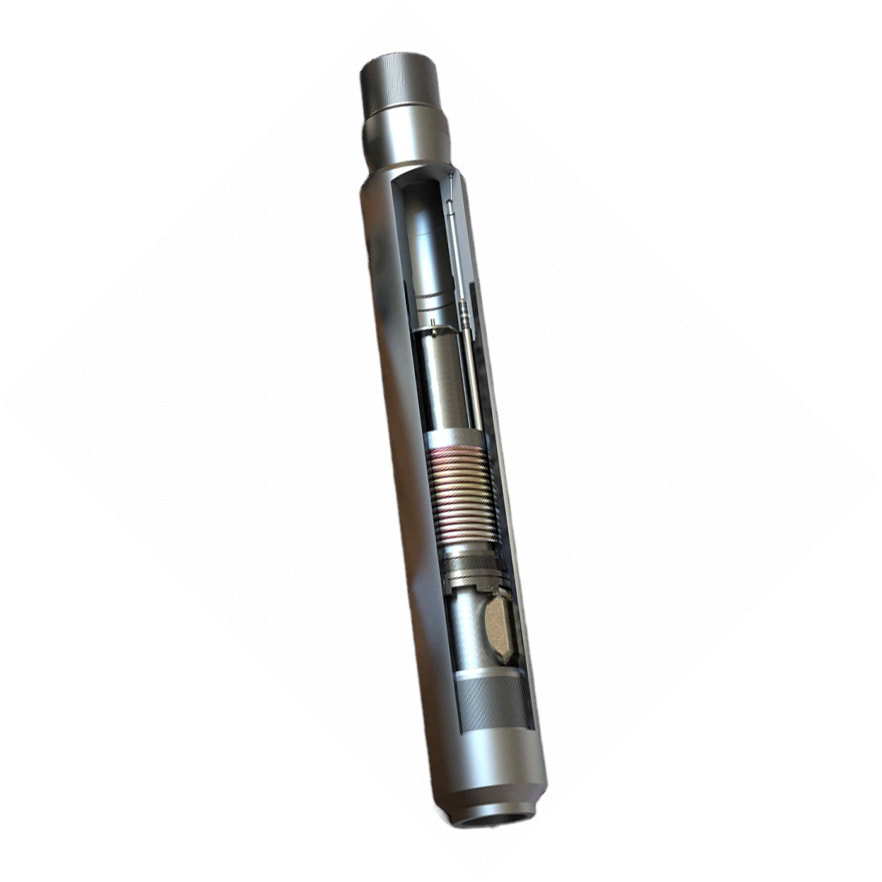
The NE™ tubing-retrievable safety valve (TRSV) is a single rod-piston non-elastomer flapper valve designed for general production with enhanced reliability and long life. The valve includes the non-elastomer hydraulic actuator design from the highly reliable SP™ line of safety valves. Along with the metal-to-metal (MTM) body joints and closure mechanism, the actuator places this valve in the premium category while keeping costs economical. The simple, compact design enhances the valve’s overall reliability and provides for trouble-free operation. Applications » General production completions » Hostile well environments incompatible with elastomers Features » Non-elastomer dynamic piston seals » Simple compact design » 100% MTM well containment in closed position » Positive debris barrier at both ends of flow tube » No construction seals used in the lockout and communication system » Unique flow tube construction prevents debris from settling on top of flow tube *information referenced from supplier catalog. View Details
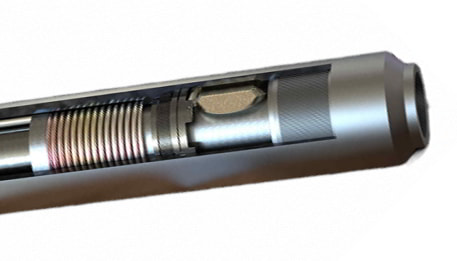
The NE™ tubing-retrievable safety valve (TRSV) is a single rod-piston non-elastomer flapper valve designed for general production with enhanced reliability and long life. The valve includes the non-elastomer hydraulic actuator design from the highly reliable SP™ line of safety valves. Along with the metal-to-metal (MTM) body joints and closure mechanism, the actuator places this valve in the premium category while keeping costs economical. The simple, compact design enhances the valve’s overall reliability and provides for trouble-free operation. Applications » General production completions » Hostile well environments incompatible with elastomers Features » Non-elastomer dynamic piston seals » Simple compact design » 100% MTM well containment in closed position » Positive debris barrier at both ends of flow tube » No construction seals used in the lockout and communication system » Unique flow tube construction prevents debris from settling on top of flow tube *information referenced from supplier catalog. View Details